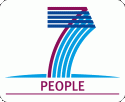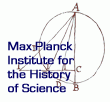Medical books in the Library of Emmanuel Ximenez
By the turn of the sixteenth century, booksellers across Europe were offering interested readers a broad range of Latin and vernacular books on medicine and health-related topics. A glance at his household inventory suggests that Emmanuel Ximenez took full advantage of this boom in 'medical' publishing. While in many ways it is difficult to delineate clear boundaries of what might constitute a 'medical' book, around 60 books listed in the inventory touch on academic medicine and other health-related subjects. In building up his medical library, Ximenez brought together books covering a wide variety of topics including practical medicine, general medical guides, anatomy, specialist treatises on specific diseases and ailments such as the plague, books of secrets, herbals and health regimens. One unifying factor across all these different medical genres might have been Ximenez's preference for the intellectual company of recent and contemporary rather than ancient and medieval writers on medicine and natural philosophy. That is, if we look to books on academic medicine, Ximenez's bookshelves are laden with works by Andreas Vesalius (1514-1564), Giovanni Arcolano (1390-1458), Felix Platter (1536-1614), Martin Ruland the Elder (1532-1602), Sebastian Meyer (1465-1545) and Georg Pictorius (c. 1500-1569), while Hippocrates is only represented by his Aphorisms and works by Galen are conspicuously absent. The library has also substantial holdings of books by contemporary medical writers who prefer to disseminate their ideas in the vernacular, including Amboise Paré, Leonardo Fioravanti (1517-1588), and Giovanni della Porta (1535-1615).
Three main areas of knowledge are particularly well presented in the medical library. First, Ximenez was clearly interested in iatrochemistry and Paracelsianism. Aside from a number of titles by Paracelsus himself (including two sets of his Opera omnia (1590) and his surgical works in Latin, French, and German), Ximenez also owned copies of Petrus Severinus's Idea medicinae philosophicae (Basel 1571) as well as the works of Joseph Du Chesne, including De re medica; Pestis Alexicacus and Medicina hermetica. His interest in the topic also extended to anti-Paracelsian works by physicians such as Giovanni Tommaso Minadoi (1549-1615). Second, as mentioned above, the library contains numerous works by contemporary 'professors of secrets' Leonardo Fioravanti and Giambattista della Porta. These included Fioravanti's Capricci medicinali (1561), Compendio di secreti rationali et medicinali (1564), Chirurgia (1570), Phisica (1582), and Thesoro della vita humana (1582), and of della Porta's works Ximenez owned copies of the Magia Naturalis, the Phytognomica, the agricultural encyclopedia Villa (1592), and three different editions of De humana physiognomonia. Ximenez's fascination with books of secrets is also demonstrated by his ownership of Levinus Lemnius' Occulta naturae miracula (1616), Girolamo Cardano's De subtititate rerum, Nicholas Flamel's Trois traictez de la philosophie naturelle, and Antoine Mizaud's Centurie, a collection of 1200 aphorisms on natural and supernatural plant, animal, and mineral curiosities, as well as ailments and diseases. Third, the inventory suggests that Ximenez had an interest in books on preserving health and the prolongation of life. These included the Causes de la veille et sommeil, songes, vie et mort by the French historian Scipion Dupleix (1569-1661), the Hygiasticon de valetudine et vitae conservatione by the Flemish Jesuit and theologian Leonard Lessius, the De conservanda valetudine by the German humanist, astrologer, statesman, and merchant Heinrich Rantzau (1526-1598), the Liber de presagienda vita et morte aegrotantium and De proroganda vita by the physicians Prospero Alpino and Martinus Pansa. Marsilio Ficino's De vita (1489) could also be included in this group of texts, since in addition to presenting the Neoplatonist view of the world's ensoulment and its integration with the human soul, the work also provides ample contemporary medical and astrological advice for maintaining health and vigor.
A number of Ximenez's book purchases appeared to have been driven by practical health-related needs. Ximenez himself suffered from recurring bouts of gout, and his letters to Antonio Neri detail how he tried to alleviate his pains using 'chemical' medicines. In addition, the correspondence also indicates that Ximenez considered visiting thermal spas as a complementary therapy. It may have been within this context that he acquired and read the Spanish translation of Gilbert Fuchs's (in the inventory referred to as Gilbert Limbourg) De acidis fontibus sylvae Arduennae, praesertim eo qui in Spa visitur, libellus. Ximenez's interest in practicing medicine extended to search for cures on behalf of his family members. In particular, he owned a number of volumes on women's health and on the 'secrets of women.' These included Albertus Magnus's De secretis mulierum, Winter von Andernach's Gyneciorum commentarii and Jean Leibault's Trésor des remèdes des femmes. Ximenez's interest in books on women's 'secrets' was one shared by many other male Renaissance readers, but given his discussion of his wife's long term illness the inclusion of these texts seems rather poignant. When analyzing book inventories, one difficulty encountered by the historian is ascertaining who within a particular household had access to and actually read the books in the library. While our analysis here focuses on Ximenez as the main book purchaser and reader, it may pay to remember that other members of the household might have contributed to and consulted the medical volumes described above.
Literature
Eamon, William. Science and the Secrets of Nature: Books of Secrets in Medieval and Early Modern Culture. Princeton: Princeton University Press, 1996.
Maclean, Ian. "The Diffusion of Learned Medicine in the Sixteenth Century Through the Printed Book." Learning and the Marketplace in the History of the Early Modern Book. Ed. Ian Maclean. Leiden: Brill, 2009. 59-86.
Maclean, Ian. Logic, Signs and Nature in the Renaissance: The Case of Learned Medicine. Cambridge: Cambridge University Press, 2007.
Siraisi, Nancy. Medieval and Early Renaissance Medicine: An Introduction to Knowledge and Practice. Chicago: Chicago University Press, 1990.


